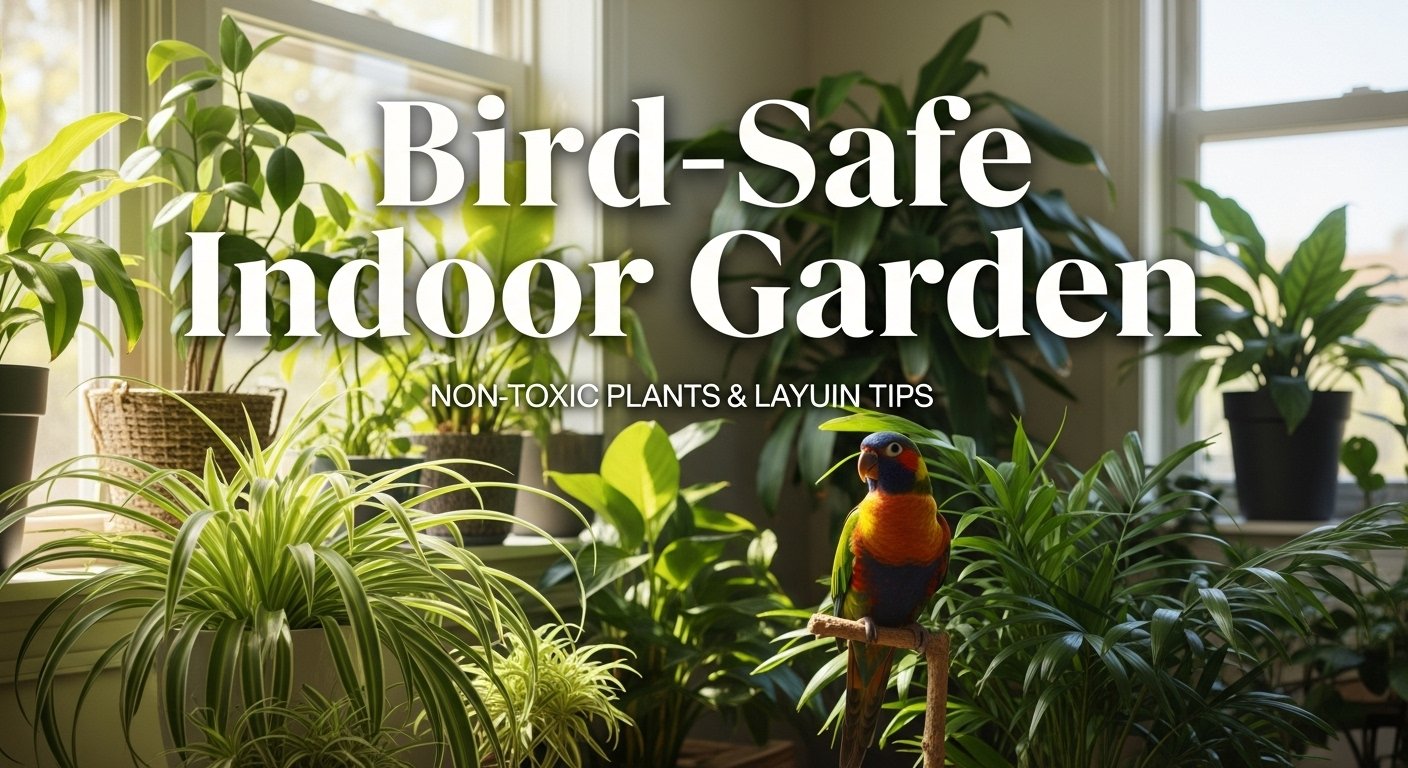
How to Create a Bird-Safe Indoor Garden (Non-Toxic Plants & Layout)
Bringing nature indoors is soothing for you and your bird. But while greenery can brighten up a space, not all plants are safe for feathered friends. Some common houseplants, like philodendrons and lilies, are toxic to birds and can cause serious health problems.
With the right plant choices and smart layout, you can create a bird-safe indoor garden that’s both beautiful and enriching for your pet. Let’s explore how.
Why Birds Love Plants Indoors
Birds are natural foragers and explorers. Indoor plants provide:
- Mental stimulation → exploring textures and smells
- Foraging enrichment → chewing, shredding leaves, pecking soil
- Comfort → mimicking natural habitats
- Cleaner air → many plants act as natural air purifiers
A bird-safe garden enriches their environment while adding natural beauty to your home.
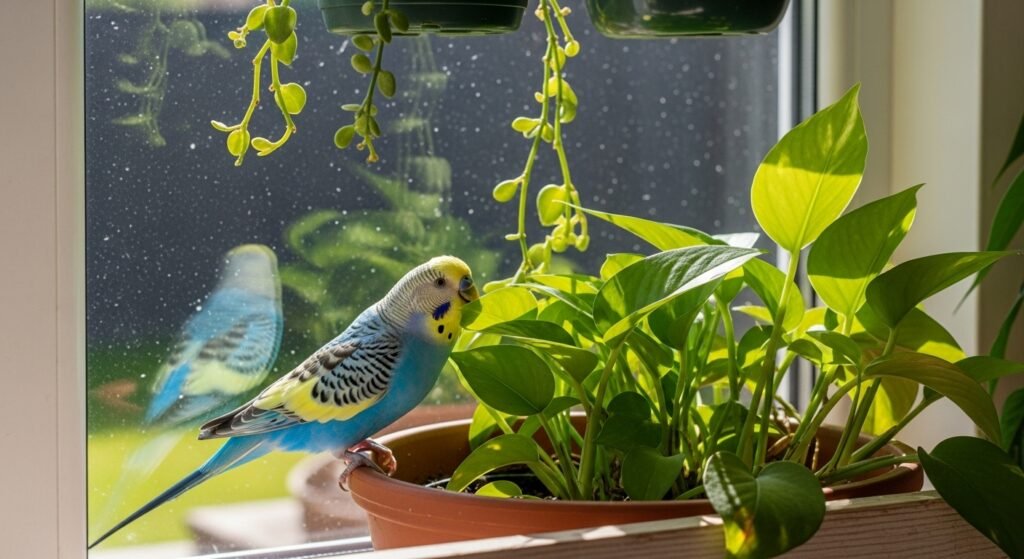
Toxic Plants to Avoid
Before we list safe plants, let’s cover the dangerous ones. Some common houseplants can be toxic if chewed or ingested.
Toxic to Birds:
- Philodendron
- Dieffenbachia (Dumb Cane)
- Lilies (all types)
- Pothos
- Oleander
- Aloe Vera (for cats/dogs safe, but not birds)
- Azaleas & Rhododendrons
- Foxglove
- Peace Lily
These plants may cause vomiting, weakness, difficulty breathing, or even organ failure in birds. Always double-check before bringing a new plant home.
Safe, Non-Toxic Plants for Birds
Luckily, plenty of safe options exist. These plants are non-toxic and enriching:
Bird-Safe Houseplants:
- Spider Plant → Fun for birds to chew and swing on.
- Areca Palm → Adds tropical vibes, safe if nibbled.
- Bamboo Palm → Hardy and safe.
- Parlor Palm → Compact and bird-friendly.
- Boston Fern → Non-toxic and fluffy for foraging.
- Calathea (Prayer Plant) → Colorful leaves, safe for curious beaks.
- African Violet → Adds flowers without risk.
- Hens and Chicks (Succulent) → Non-toxic and hardy.
Edible/Herb Options:
- Basil
- Parsley
- Dill
- Mint
- Rosemary
- Thyme
These double as safe snacks for parrots, cockatiels, and budgies.
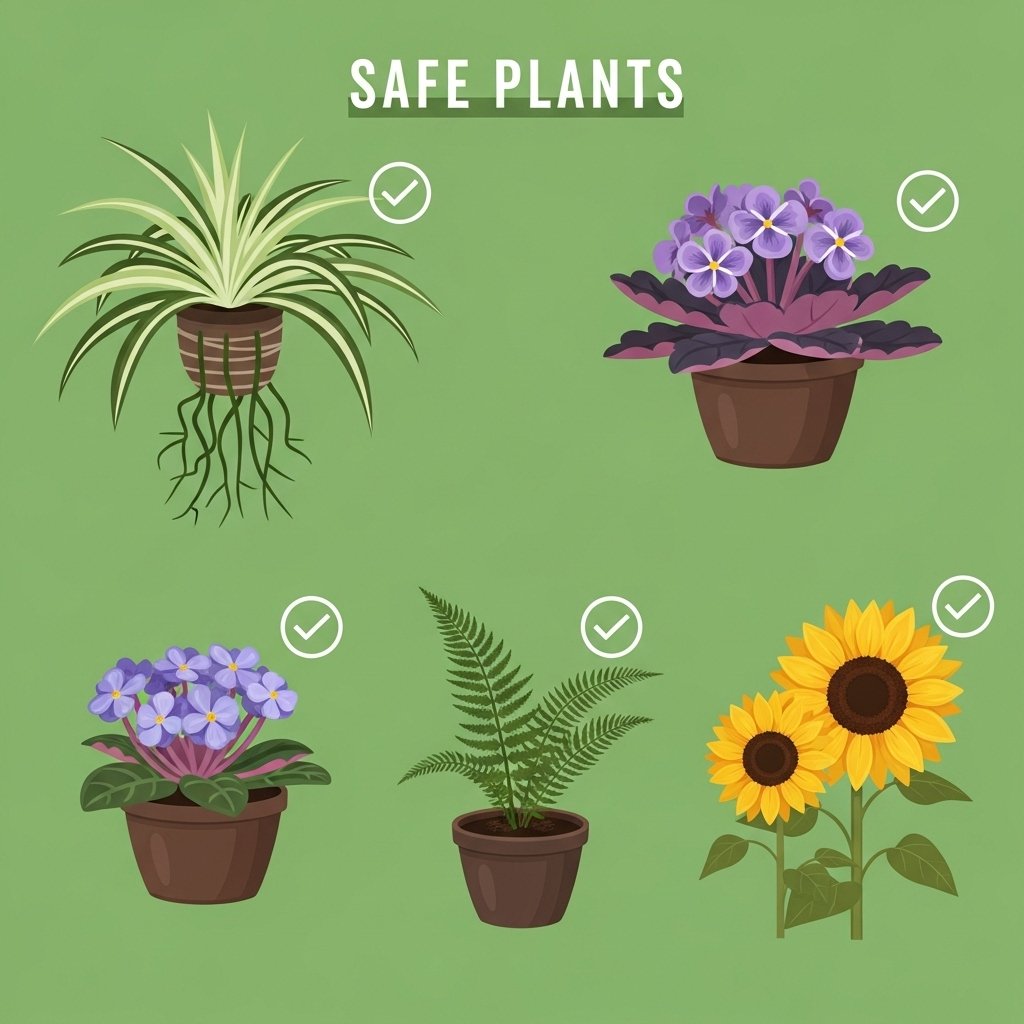
How to Arrange a Bird-Safe Indoor Garden
Creating a safe layout matters as much as plant choice. Birds will chew almost anything so plan smart.
- Choose Sturdy Containers
- Avoid fragile clay pots that can tip over.
- Use heavy ceramic or metal planters.
- Avoid Toxic Soils & Fertilizers
- Skip chemical fertilizers.
- Use organic soil without perlite (white bits can be mistaken for food).
- No pesticides opt for natural pest control (neem oil, soapy water).
- Create Bird Zones
- Safe Zone Plants: Non-toxic plants placed near play areas.
- Out-of-Reach Zone: Decorative toxic plants (if you insist on keeping some) hung in bird-free areas.
- Use Vertical Space
- Hanging baskets keep plants safe from constant nibbling.
- Wall-mounted planters add greenery without bird access.
- Rotate Plants
- Switch out plants occasionally for enrichment.
- Offer fresh herbs in foraging toys.
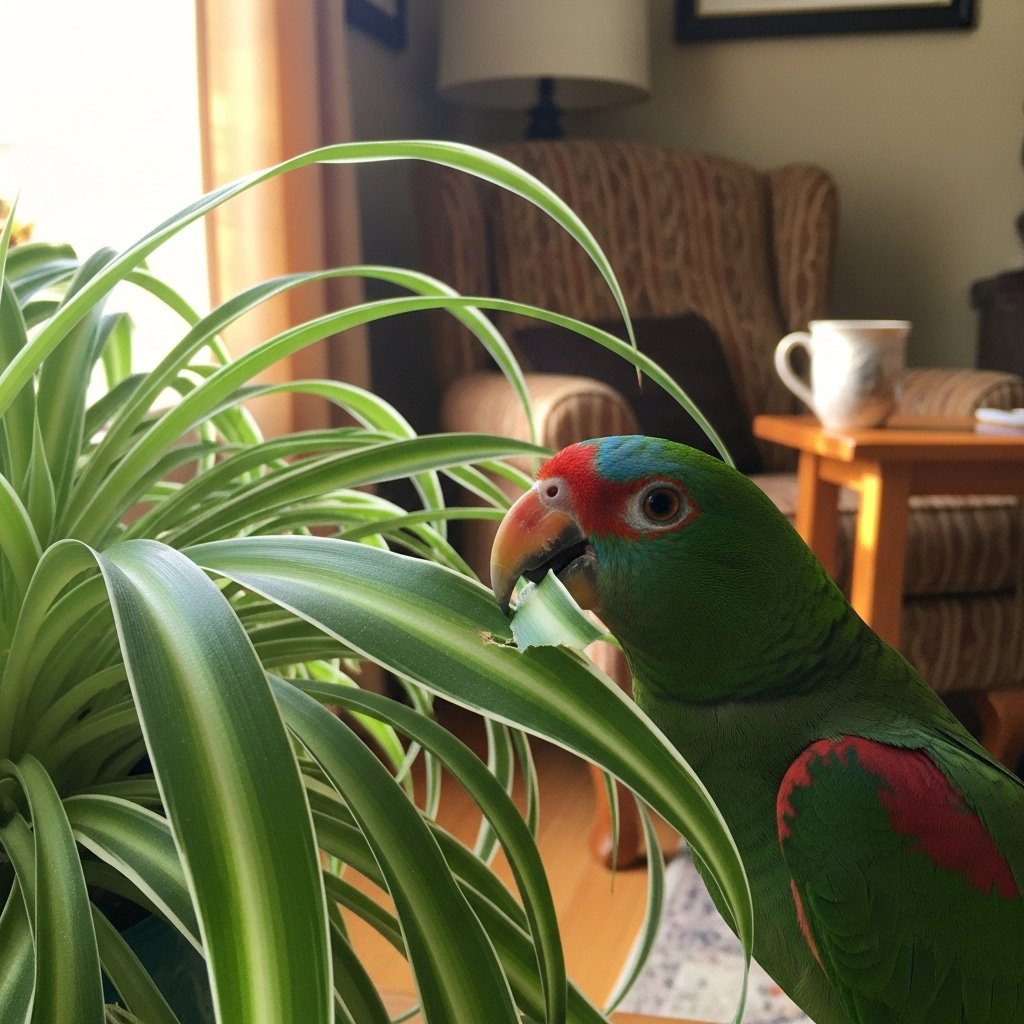
Tips to Keep Your Bird Safe Around Plants
- Supervision is key. Don’t leave new plants unattended until you know your bird’s habits.
- Offer safe chewing alternatives → bird-safe wood, toys, and herbs.
- Clean leaves regularly → dust and residue can irritate birds.
- No standing water in plant trays—prevents bacteria and mold.
Enrichment Ideas Using Safe Plants
- Foraging Fun: Place herbs like parsley or basil inside toys.
- Play Tunnels: Create cardboard-box mazes with safe plant cuttings.
- Perch Integration: Attach small planters to stands for enrichment.
- Sensory Stimulation: Rotate plants so your bird experiences new smells/textures.
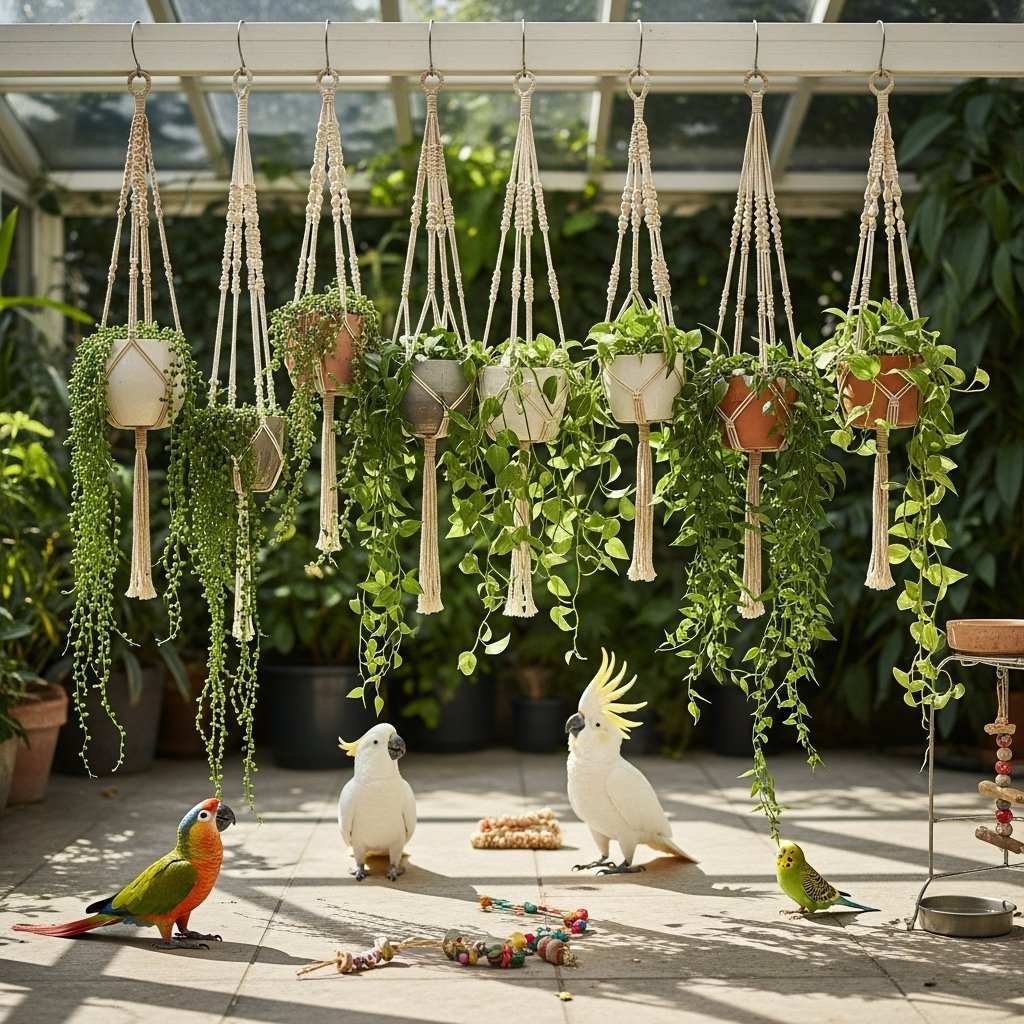
Expert Insights
Avian vets recommend enriching bird environments with natural greenery but caution against unsupervised free access.
Dr. Laurie Hess, DVM, notes:
“Safe, non-toxic plants not only add beauty but mimic a bird’s natural environment. Just remember: enrichment should be supervised, and diet should remain balanced.”
Final Thoughts
Creating a bird-safe indoor garden is one of the best ways to enrich your feathered friend’s life. With the right plants and smart placement, you’ll have a home that’s lush, beautiful, and completely safe for curious beaks.
So go aheadadd that spider plant, grow some parsley, and let your indoor space bloom. Your bird will thank you with chirps of joy.



